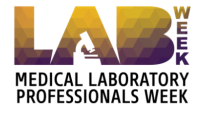Glioblastoma Multiforme (GBM)
Make an Appointment
Our team of dedicated access representatives is here to help you make an appointment with the specialists that you need.
Glioblastoma multiforme (GBM) is a malignant tumor of the brain and spinal cord. Here at Columbia University Irving Medical Center/NewYork-Presbyterian Hospital, we specialize in diagnosing and surgically treating GBMs.
GBMs that develop in the brain are the main subject of this page.
GBMs are one type of a group of tumors collectively known as astrocytomas—so called because they originate from astrocyte cells. Of the astrocytomas, GBMs are the most aggressive. They are also the most common, making up more than half of all astrocytomas. In fact, GBM is the most common type of tumor that starts in the brain.
The World Health Organization grades tumors according to how fast they grow and their ability to spread to surrounding tissues. GBMs are the highest grade, Grade IV, meaning that they grow quickly and tend to invade surrounding tissue. They are sometimes referred to as “high-grade astrocytomas.” However, GBMs are not always uniform tumors. They can be composed of several grades and cell types, so precise diagnosis and effective treatment require expertise.
Although GBMs can grow anywhere in the brain and spinal cord, they tend to be found most often in the cerebrum. The cerebrum occupies most of the space in the skull, spanning from the top of the head to just above the neck.
Depending on how they arise, GBMs can be divided into two types. Each type also has distinct genetic characteristics.
- Primary GBMs arise de novo. These are the most common form of GBM and the most aggressive. They tend to develop in adults older than 50.
- Secondary GBMs start as lower grade astrocytomas and then mature to a higher grade. They tend to develop in adults younger than 45.
At Columbia Neurosurgery, our research laboratory dedicated to understanding and finding novel treatments for GBM and other tumors is the Bartoli Brain Tumor Laboratory. In this lab, neurosurgeons and researchers study how tumors like GBM begin, examine their genetic differences, develop treatments tailored for individual tumors and explore ways to deliver the treatments directly to the tumors. Researchers in many parts of the world are working on new and improved treatments for GBM.
A physician may recommend enrolling in a clinical trial to receive the latest therapies. A clinical trial is a study in which new therapies are evaluated in volunteer patients. These therapies are not yet approved by the United States Food and Drug Administration, but they have undergone rigorous testing in laboratory studies and have shown promise. Given the rapid pace of advancement in our knowledge about GBM, a clinical trial can be a good option because it allows a patient the opportunity to receive the latest, most promising treatments.
Symptoms
Symptoms can vary and often depend on the size and location of the GBM. Common symptoms may include headache, weak muscles, seizure, cognitive impairment, and changes in behavior.
The growing GBM may also exert pressure on surrounding tissue and increase intracranial pressure. Common symptoms of high intracranial pressure may include headache, nausea, vomiting, and drowsiness.
Diagnosis
If during a physical or neurological examination a physician suspects a brain tumor, imaging tests may be recommended.
Magnetic resonance imaging (MRI) is often the first choice. MRI uses a powerful magnetic field and radio waves to construct a detailed image of soft tissues, like tumors. Computed tomography (CT) scan is a good alternative imaging test for patients who cannot undergo MRI, like those who have a pacemaker or other metal implants. CT scan uses X-ray and computer technology to produce images of the skull, blood vessels and calcified tumors. GBMs are often calcified.
A definitive diagnosis may not be possible until a tissue sample can be analyzed in the laboratory.
Risk Factors
The causes of GBM are currently unknown. This is an area of active research.
GBM can occur at any age but is most common in adults between 45 and 70 years old. GBM affects all races in the United States but occurs slightly more often in people of Caucasian ancestry.
People who have the rare genetic conditions neurofibromatosis type 1, Turcot syndrome and Li-Fraumeni syndrome are at increased risk for GBM. These genetic conditions are hereditary.
Otherwise, GBM is not hereditary.
Treatments
GBM is complex to treat because it can be made of several cell types, each responding differently to therapy. Current treatments are often palliative, rather than curative. Standard treatment includes surgery, radiation and/or chemotherapy. Our neurosurgeons meet with patients to discuss each individual’s goal of treatment, and together develop a tailored approach.
The first treatment step is usually brain tumor surgery. During brain tumor surgery, a neurosurgeon performs a craniotomy. The neurosurgeon then removes as much of the tumor as is safely possible. More tumor removal often leads to a better prognosis. But because GBMs invade nearby brain tissues with their tentacle-like projections, removing all of the tumor would frequently not be possible without removing healthy brain tissue too.
A sample of the tumor is taken during surgery and analyzed in a laboratory to confirm a diagnosis. Often, the tissue sample contains a mixture of cell types. These cell types are still being researched, but so far, four cell types, each genetically different, have been found. Genetic testing can be used to determine the cell types, and this information is valuable for selecting among adjuvant treatments.
To slow down the growth of the tumor that remains after surgery, a combination of radiation therapy and/or chemotherapy is used.
Neurosurgeons at Columbia are very active in conducting research to learn more about GBM in order to provide better treatment options for this aggressive and hard-to-treat tumor.






